mobile View, to the German Version tap the flag
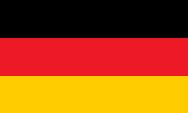

- autonomous Danish possession
- own names: Føroyar (Faroese), Færøerne (Danish)
• Flag
• Historical Flags
• Meaning/Origin of the Flag
• Coat of Arms
• Meaning/Origin of the Coat of Arms
• Map
• Numbers and Facts
• History
• Origin of the Country's Name
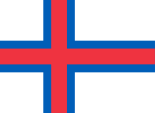
Flag of Faroe Islands,
ratio = 8:11,
Source, by: Wikipedia (D)






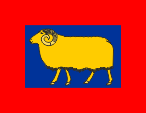
19th century,
unofficial national flag
ratio = 4:5,
Source, by: Det første Færøernes flag i Fámjin kirke - dan.wikitrans.net



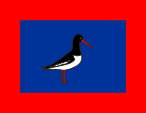
19th century to ca. 1931,
unofficial national flag
ratio = 4:5,
Source, by: chromascope.dk




The today 's flag of the Faroe Islands was designed in June 1919 by Faroese students in Copenhagen, and it was unofficially hoisted on 22nd of June in 1919 in the village of Fámjin. The design is derived from the flag of Norway and shows the typical Scandinavian cross, but the colors are reversed. Since 1959 the blue is displayed slightly lighter, and since 29th of December in 1998 the colors are exactly defined. The colours, are given for the flag: red = pt 032, blue = pt 300. On 29th of July in 1930 the today's flag of the Faroe Islands was hoisted instead of the Danish flag on the Faroese Parliament, which was not recognized. However, the use of the flag became a common practice from 1931, but not officially. The flag was officially introduced on 25th of April in 1940 to mark the vessels of the by German troops non-occupied Danish islands. The Autonomy Act of 23rd of March in 1948 confirmed the Flag of the Faroe Islands officially. In the 19th century there had been some other unofficial flags on the islands, whose creation was connected with the rise of national consciousness. First, the animal from the coat of arms – an aries – was placed on a blue field in a red-bordered flag, later the Faroese national bird Tjaldur (Oystercatcher) was placed into the blue field. With the appearance of the cross flag these designs came into disuse.
Source:
Wikipedia (D),
Flags of the World

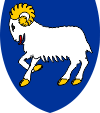
Coat of arms of Faroe Islands,
Source, by:
Wikipedia (D)

The aries is known since the 14th century as the emblem of the Faroe Islands. As such, it was used in the greater coat of arms of Denmark since 1819, in silver on a blue field. The aries is a clear indication for the name of the archipelago: Føroyar = Sheep Islands. A coat of arms with an aries was officially used until 1816 on the islands by the parliament of the archipelago (Løgting), but the Løgting was abolished. After the introduction of the Autonomy Law of 1948, the aries was re-introduced as the emblem of the Faroe Islands by the Prime Minister in 1950, but within a seal. In 2004 the today's coat of arms was introduced.
Source:
Wikipedia (D)

Location:
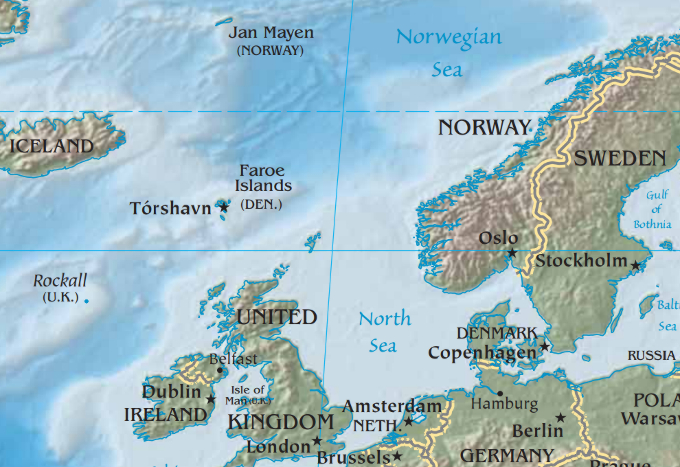
Source: Freeware, University of Texas Libraries, modyfied by: Volker Preuß
Map of the country:
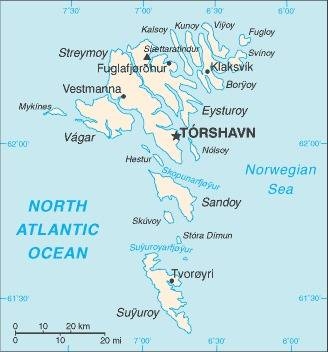
Source: CIA World Factbook

Area: 539 square miles
Inhabitants: 51.371 (2019), thereof 92% Faroe Islanders, 6% Danish
Religions: 80% Protestant, 12% Free Churches, Pentecostals and Jehovah's Witnesses
Density of Population: 95 inh./sq.mi.
Capital: Tórshavn (Danish: Thorshavn), 12.410 inh. (2014)
official Languages: Faroese, Danish
Currency: 1 Faroese Króna (kr) = 100 Oyrur and 1 Danish Krone (dkr) = 100 Oere
Time Zone: GMT
Source: Wikipedia (D)

9th century · beginning Norwegian settlement
1380 · Faroe is administrated by Denmark and Norway
1814 · Faroe is administrated by Denmark
1940–1945 · British occupation
1946 · unilateral declaration of the political independence
1948 · conceding of innerer self administration
Source:
Atlas zur Geschichte,
Discovery '97

The name of the archipelago goes back to the Danish word for sheep: "Får". So the Faroe Islands are the "sheep islands".
Source: Wikipedia (D)


![]()














